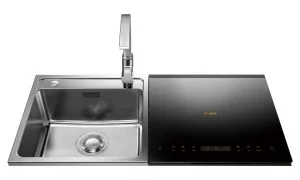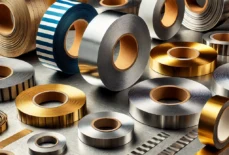Steel fabrication is a critical process in the construction and manufacturing industries. Accurate and precise steel fabrication drawings are the foundation of successful projects, ensuring that the final product meets design specifications and safety standards. In the United States, adhering to certain key principles in steel fabrication drawing is essential for achieving high-quality outcomes. Here are 12 key principles to consider when creating steel fabrication drawings:
1. Understand Design Specifications for Steel Fabrication:
Before diving into drawing, grasp the project’s unique design requirements. This knowledge will guide your pen to craft drawings that perfectly align with the project’s vision.
Understanding the specifics of the project’s design, including load-bearing capacity, architectural aesthetics, and functionality, is like having a blueprint to guide your artistic endeavor.
2. Compliance with Codes and Standards in Steel Fabrication:
Imagine codes and standards as the rules of the game. Familiarize yourself with industry codes like those from the American Institute of Steel Construction (AISC). These guidelines ensure that your drawings meet the highest safety and quality benchmarks.
Adhering to standards not only guarantees a safe outcome but also streamlines the fabrication process, creating a win-win scenario for all parties involved.

3. Detailing Accuracy: A Pillar of Steel Fabrication Drawings
Precision is your best friend. Every detail you include, from dimensions to annotations, must be accurate and crystal clear. Remember, precision avoids costly errors during fabrication and installation.
Think of your drawings as a roadmap for the fabricators; the clearer the directions, the smoother the journey to the final structure.
4. Industry-Standard Symbols: A Universal Language in Steel Fabrication
Symbols are like a universal language among fabrication professionals. Employ recognized symbols consistently to ensure that everyone involved in the project speaks the same ‘drawing language.’
Just like using emojis in texts, these symbols convey complex information quickly and effectively, making your drawings easier to understand and follow.
5. Material and Component Specifications: The Backbone of Steel Fabrication
Consider materials as the ingredients for your project. Specify the types, grades, sizes, and any special treatments needed for the steel components. Think of it as providing a recipe for success.
Each specific detail ensures that the final product meets the required strength and durability standards, fitting perfectly into the project’s puzzle.
6. Dimensional Tolerance Consideration in Steel Fabrication
Imagine a margin of error like a safety net. Incorporate appropriate tolerances to account for slight variations during the fabrication process. This ensures that the end product still fits like a glove.
Think of it as giving a bit of wiggle room to ensure that the puzzle pieces fit together seamlessly, creating a robust and reliable structure.

7. Clear Assembly Instructions: Guiding Steel Fabrication Efforts
Think of your drawings as assembling instructions, just like putting together a puzzle. Clearly articulate how components should be welded, fastened, and aligned to ensure a strong and safe assembly.
Picture your drawings as a Lego instruction manual, providing step-by-step guidance for fabricators to build a masterpiece.
8. Quality Control Measures in Steel Fabrication: Ensuring Excellence
Implement checkpoints within your drawings to ensure quality at every stage of fabrication. These checkpoints act like traffic lights, ensuring that each phase meets the highest quality standards before proceeding.
Just as traffic lights guide and control traffic flow, these measures guide and control the fabrication process, ensuring a safe and reliable end product.
9. Alignment with Architectural and Engineering Drawings in Steel Fabrication
Coordination is key! Make sure your steel fabrication drawings align seamlessly with the broader architectural and engineering plans. It’s like fitting puzzle pieces together to create a cohesive picture.
Imagine each drawing as a puzzle piece; when they fit perfectly, you create a stunning and complete picture that amazes all who see it.
10. Design for Ease of Steel Fabrication: Optimizing Drawings
Design with practicality in mind. Optimize your drawings to simplify the fabrication process, making it more efficient and cost-effective. Think of it as creating a recipe that’s easy to follow and yields a delicious dish.
Just as a simple recipe makes cooking enjoyable and successful, designing for ease of fabrication makes the process smooth and the outcome exceptional.

11. Clarity in Welding Symbols: Enhancing Steel Fabrication Precision
Welding symbols are like a welding language that fabricators speak fluently. Use them clearly and precisely to convey welding processes, positions, and details. Think of these symbols as the recipe instructions for welding the components together.
Just like following a recipe step by step ensures a tasty dish, clear welding symbols guide fabricators to create strong and secure joints, enhancing the overall structural integrity.
12. Effective Communication with Fabricators: Key to Successful Steel Fabrication
Communication is the glue that holds a project together. Establish clear channels of communication with fabricators, ensuring they can seek clarification or provide valuable insights. Imagine it as a well-functioning telephone line, where information flows seamlessly between you and the fabricators.
Just like a well-orchestrated orchestra, effective communication harmonizes the efforts of everyone involved, creating a masterpiece that showcases collaboration and skill.
Accurate steel fabrication drawings are like the foundation of a strong building—they need to be solid, well-planned, and precise. Understanding the design, following standards, using clear symbols, and optimizing for fabrication ease are the fundamental principles that will guide you toward successful and efficient steel fabrication projects in the USA.
Special Credit & Acknowledgement:
A huge thank you to MechCiv Designers for their invaluable insights and contributions in the field of steel fabrication drawing, which greatly enriched and informed the content of this blog. Their expertise and dedication to precision have played a crucial role in shaping the principles highlighted in this article. Thank you, MechCiv Designers America, for your continued commitment to excellence in Steel Fabrication Drawing.
MechCiv Designers’ input has elevated this article, transforming it into more than just an informative piece—it’s now a captivating endorsement of how steel fabrication is steering the course of the future in American construction.








































